While only a handful of Category 5 hurricanes have made landfall in the United States, these storms represent the most catastrophic end of the hurricane intensity scale. Knowing about these powerful weather events is crucial for coastal communities and anyone interested in understanding extreme weather. The National Hurricane Center designates Category 5 hurricanes as “catastrophic,” indicating a very high likelihood of widespread damage and potential loss of life. To put it in perspective, a Category 5 hurricane can unleash approximately 500 times more destructive power than a Category 1 hurricane.
This article will explore the history of Category 5 hurricanes in the U.S., delve into the science behind their formation, and detail the devastating impacts they can have.
The Saffir-Simpson Hurricane Wind Scale and Category 5 History
The formal classification of hurricanes, including the designation of Category 5, became standardized with the introduction of the Saffir-Simpson Hurricane Wind Scale in 1971. This scale provides a clear and consistent method for measuring hurricane intensity based on sustained wind speeds, ranging from Category 1 to Category 5.
Before the Saffir-Simpson Scale, hurricanes were often described in more subjective terms, relying on observed damage rather than precise measurements. The scale revolutionized hurricane forecasting and communication, enabling a more precise understanding of the potential dangers posed by these powerful storms and allowing for better preparedness efforts. It provides the framework to understand the history of Category 5 hurricanes and to categorize the list of these impactful storms in the U.S.
The Birth of a Category 5 Hurricane: Formation Explained
Category 5 hurricanes, like all hurricanes, originate from a complex interplay of environmental conditions. Several key ingredients must come together for a storm to reach such ferocious intensity.
The necessary conditions include:
- Initial Weather Disturbance: A hurricane’s genesis typically begins with a pre-existing weather disturbance, such as a tropical wave or a low-pressure area. This disturbance provides the initial spin and atmospheric instability required for development.
- Warm Ocean Temperatures: Hurricanes thrive on warm ocean waters, requiring sea surface temperatures of at least 80°F (26.5°C) to provide the necessary heat and moisture. This warm water heats the air above it, causing it to rise and create a low-pressure zone.
- Atmospheric Moisture: As warm, moist air ascends, it cools and condenses, forming clouds and releasing latent heat. This released heat further warms the surrounding air, causing it to rise more rapidly and establishing a powerful convection cycle.
- Minimal Wind Shear: Low wind shear, which refers to changes in wind speed and direction with altitude, is critical. High wind shear can disrupt a developing storm’s structure, preventing it from organizing and intensifying. Low shear allows the storm to maintain its vertical structure and efficiently draw in more energy.
- The Coriolis Effect: The Earth’s rotation creates the Coriolis effect, which is essential for giving hurricanes their spin and organization. It also influences the storm’s track, guiding it along curved paths rather than straight lines, contributing to its longevity and intensity.
When these conditions align perfectly, and a storm intensifies, it can potentially reach Category 5 status. Beyond wind speed, a hurricane’s central pressure is a vital indicator of its strength. Category 5 hurricanes typically exhibit very low central pressure, often dropping below 920 millibars. This low pressure signifies a highly organized and powerful storm system with an intense cyclonic circulation. Visually, Category 5 hurricanes often appear large, with a well-defined eye surrounded by a solid and intense eyewall. Their impact potential is extreme, characterized by catastrophic damage and life-threatening conditions.
The Ferocious Winds of a Category 5 Hurricane
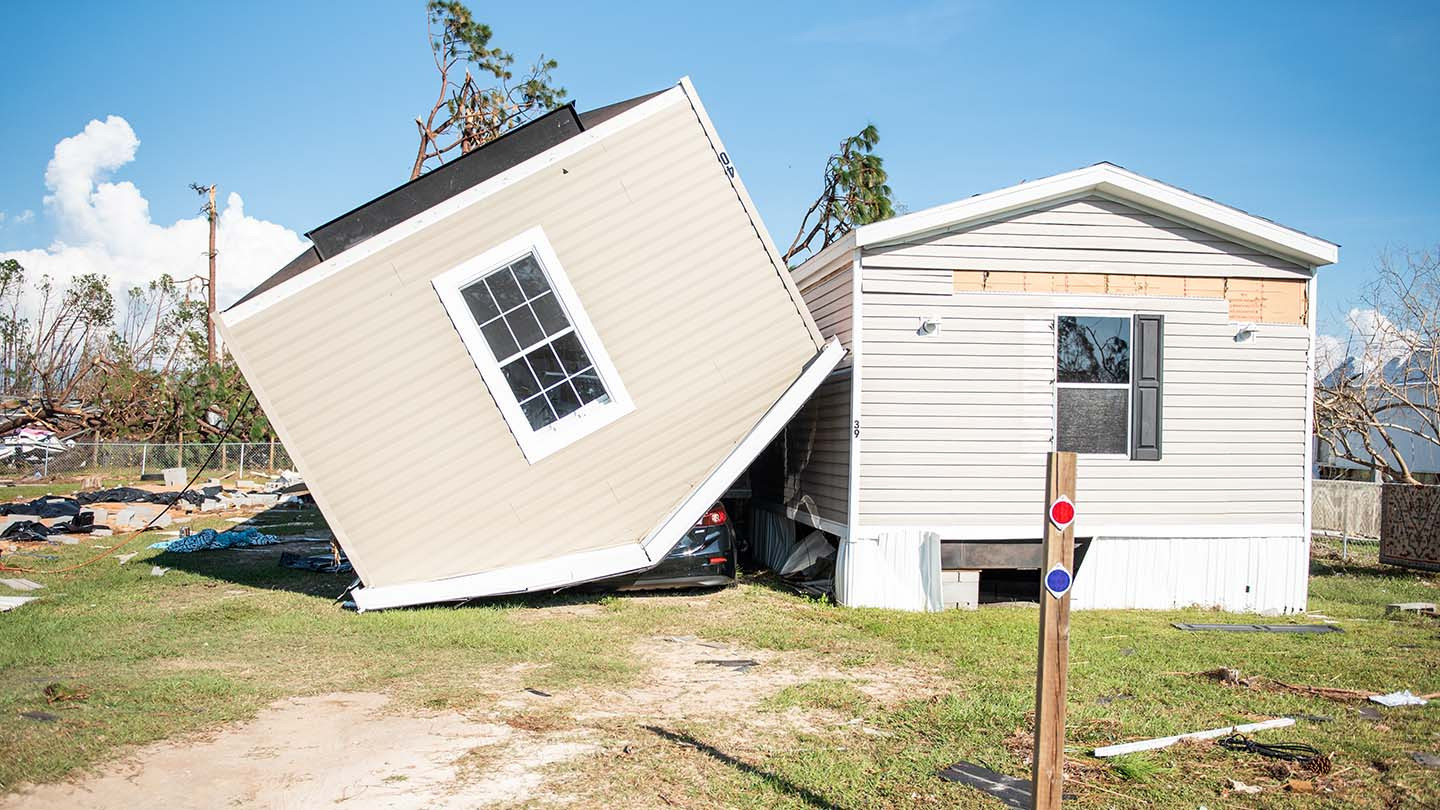 Building in Florida Panhandle flipped over by Category 5 Hurricane Michael
Building in Florida Panhandle flipped over by Category 5 Hurricane Michael
A building in the Florida Panhandle devastated by the extreme winds of Category 5 Hurricane Michael.
Category 5 hurricanes are defined by their incredibly powerful sustained winds exceeding 157 mph (252 km/h). These winds are not just numbers; they translate to widespread and devastating damage.
The impacts of Category 5 hurricane winds include:
- Catastrophic Structural Damage: Even well-built homes and commercial buildings can experience complete roof failure, wall collapse, or even total destruction. Wooden structures and mobile homes are particularly vulnerable, often being ripped apart or completely flattened.
- Critical Infrastructure Failure: The force of these winds can inflict severe damage on essential infrastructure like power lines, bridges, and roads. This damage leads to extended power outages and major disruptions to transportation networks and emergency services, hindering rescue and recovery efforts.
- Lethal Debris and Hazardous Conditions: Flying debris becomes a major hazard. Materials torn from damaged buildings and uprooted vegetation are propelled by the wind at high speeds, posing extreme risks to anyone outdoors and causing further damage. Uprooted trees block roadways, making them impassable and compounding the danger.
- Amplified Flooding and Storm Surge: While wind speed is the defining factor for Category 5 designation, these hurricanes also generate significant storm surges and torrential rainfall. The powerful winds drive ocean water inland and contribute to intense rainfall, exacerbating flooding and dramatically increasing the overall damage footprint.
The Scope of Category 5 Hurricane Devastation
 Marina destroyed by Category 5 Hurricane Michael, leaving behind debris and destroyed buildings on Gulf Coast
Marina destroyed by Category 5 Hurricane Michael, leaving behind debris and destroyed buildings on Gulf Coast
A marina along the Gulf Coast reduced to rubble and debris after the immense force of Category 5 Hurricane Michael.
The damage inflicted by Category 5 hurricanes is typically massive and far-reaching, representing an extreme disaster scenario that demands significant and sustained recovery operations.
The widespread devastation translates to:
- Staggering Economic Costs: Recovery from Category 5 hurricane damage is an expensive and lengthy process. Economic losses in the US from these storms have been substantial. Historical data indicates that damages can range from $12.2 billion to upwards of $60 billion, varying based on the storm’s path, size, and the affected areas. The sheer volume of debris removal, infrastructure repair, and rebuilding efforts contributes to these astronomical figures.
- Massive Displacement and Housing Crises: Widespread destruction often leaves communities with large numbers of displaced residents, creating both immediate and long-term housing shortages. Providing emergency shelter and undertaking the immense task of rebuilding housing infrastructure places enormous strain on community resources and significantly complicates the recovery process.
- Profound Psychological Impacts: Experiencing a Category 5 hurricane is a deeply traumatic event that can have lasting mental health consequences for survivors. The disruption of normal life, coupled with the loss of homes, possessions, and livelihoods, can lead to long-term psychological issues such as anxiety disorders, clinical depression, and post-traumatic stress disorder (PTSD). Mental health support becomes a critical component of disaster recovery.
- Severe Environmental Degradation: Hurricanes inflict significant harm on natural environments. Coastal erosion is accelerated, vital habitats are destroyed, and water sources can become contaminated. The environmental damage can have long-lasting effects on local ecosystems and wildlife populations. Agricultural sectors also suffer, with crops and livestock devastated, potentially leading to food shortages and economic hardship for farmers.
Advances in hurricane forecasting, utilizing satellites, radar, and sophisticated computer models, have improved our ability to predict hurricane intensity and track storm paths. However, Category 5 hurricanes remain a primary focus for disaster preparedness efforts due to their immense destructive potential and the imperative to minimize loss of life and property.
Recent Category 5 Hurricanes in the US
The most recent Category 5 hurricane to directly strike the US was in 2018. While Hurricane Beryl briefly reached Category 5 status in July 2024, it weakened significantly before reaching Texas. Similarly, Hurricane Milton attained Category 5 strength in October 2024 but diminished below that threshold before landfall. However, the increasing frequency of storms reaching such intensities, or rapidly intensifying to near Category 5 status, is a growing concern linked to factors like rising sea surface temperatures, increased atmospheric moisture, and shifts in global wind patterns.
Here’s a look at the list of Category 5 hurricanes that have made landfall in the United States:
Hurricane Michael (2018)
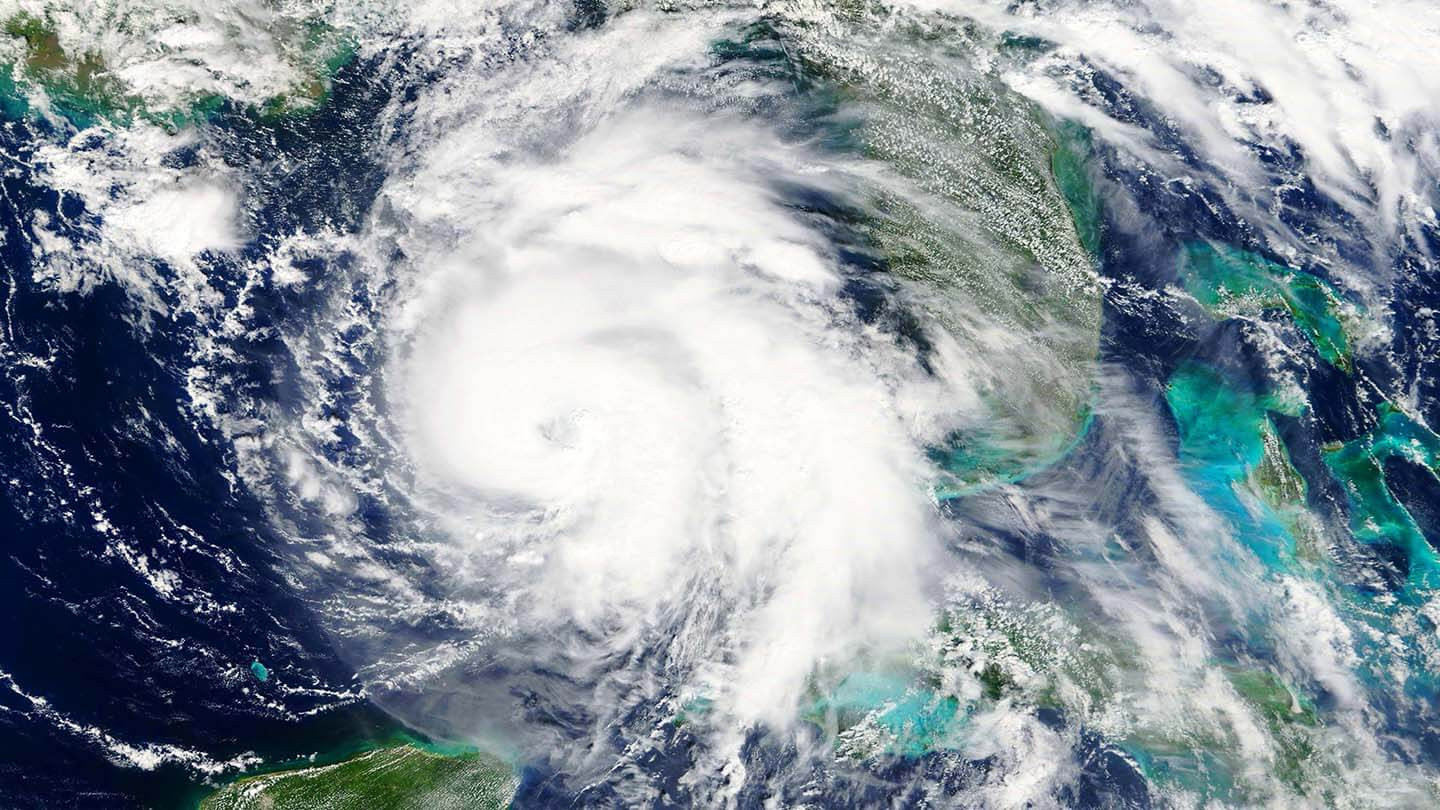 Satellite image of Category 5 Hurricane Michael heading towards Florida in October, 2018.
Satellite image of Category 5 Hurricane Michael heading towards Florida in October, 2018.
A satellite view capturing the immense scale and power of Category 5 Hurricane Michael as it approached the Florida coast in October 2018.
Hurricane Michael holds the distinction of being the fourth and most recent Category 5 hurricane to make landfall in the US. NOAA scientists determined that Michael achieved Category 5 status at landfall on October 10, 2018, packing estimated sustained winds of 160 mph and a central pressure of 919 millibars. While it weakened as it moved inland, its intensity remained remarkable. Donaldsonville, Georgia, a significant 80 miles inland from the initial landfall point, experienced a wind gust of 115 mph, demonstrating the unusual inland reach of this storm’s power.
Michael is the strongest hurricane on record to strike the Florida Panhandle and only the second Category 5 landfall ever recorded on the northern Gulf Coast. The storm inflicted approximately $25 billion in damages across the US.
Hurricane Andrew (1992)
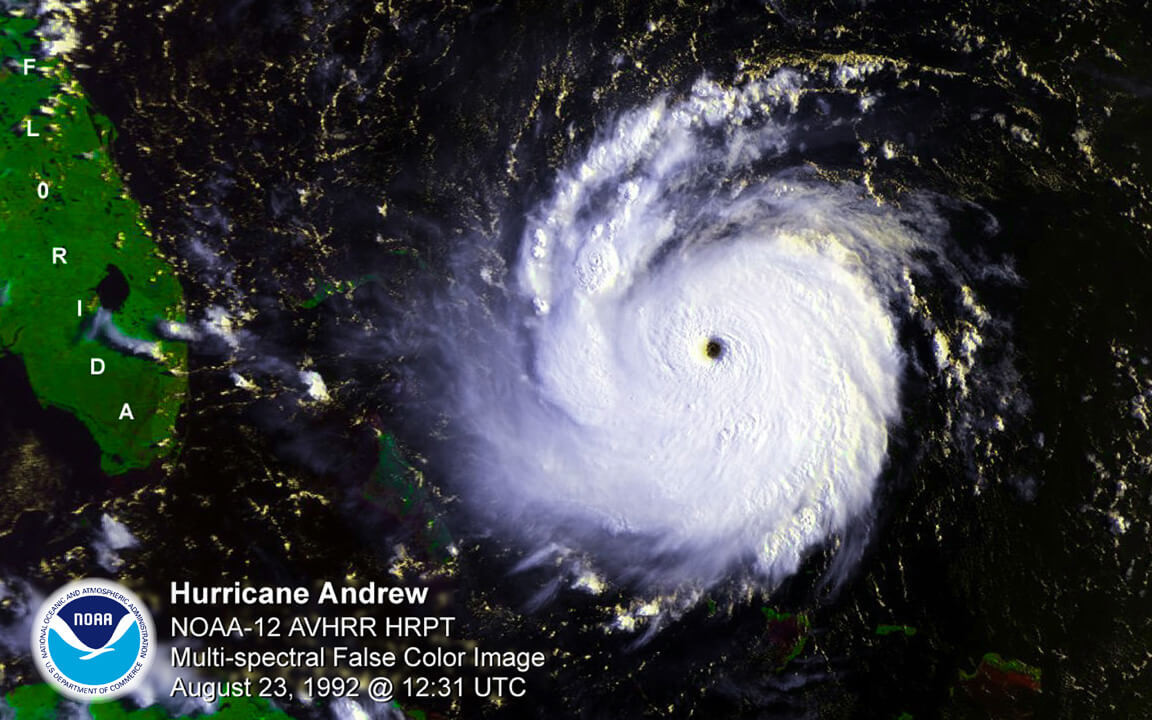 Satellite image of Category 5 Hurricane Andrew approaching South Florida in August, 1992
Satellite image of Category 5 Hurricane Andrew approaching South Florida in August, 1992
A NOAA-12 satellite image showing Category 5 Hurricane Andrew closing in on South Florida in August 1992. Source: NOAA
Third on the list is Hurricane Andrew. NOAA records indicate that Andrew made landfall in South Miami-Dade County, Florida, on August 24, 1992, with maximum sustained winds of 165 mph and a central pressure of 922 millibars. Although Andrew weakened after landfall, its impacts were still catastrophic. Powerful winds extended far inland, with gusts around 100 mph reported in some areas.
At the time, Andrew was among the most intense hurricanes to ever hit the US mainland and the most destructive storm in Florida’s recorded history. It destroyed an estimated 50,000 homes and caused roughly $26 billion in damage, making it one of the costliest hurricanes in US history.
Hurricane Camille (1969)
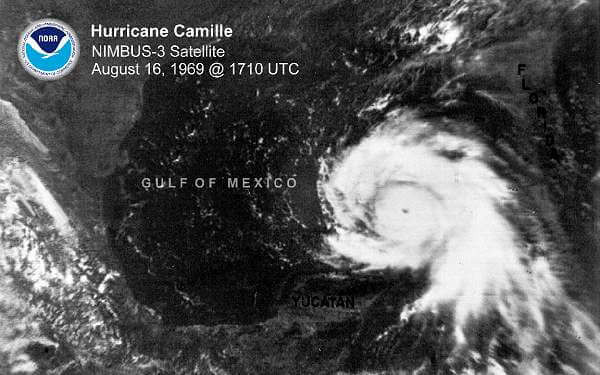 Satellite image of Category 5 Hurricane Camille approaching land in the Gulf Coast
Satellite image of Category 5 Hurricane Camille approaching land in the Gulf Coast
A 1969 NIMBUS-3 satellite image of Category 5 Hurricane Camille nearing landfall on the US Gulf Coast. Source: NOAA
Hurricane Camille ranks second on the list of Category 5 hurricanes impacting the US and left an indelible mark on hurricane history. Camille made landfall along the Mississippi Gulf Coast on August 17, 1969, with an incredibly low central pressure of 909 millibars. While wind speed recording instruments were destroyed at landfall, estimates suggest winds reached approximately 200 mph at the coast. Even without precise wind measurements, Camille remains recognized as one of the most intense hurricanes ever to strike the US, impacting multiple states.
Despite weakening as it moved inland, Camille continued to cause widespread devastation. Wind speeds of 120 mph were recorded as far as 75 miles inland. The storm’s powerful storm surge and torrential rainfall resulted in extensive damage, particularly along the Gulf Coast. In Mississippi and Alabama, over 20,000 acres of corn were flattened, primarily due to Camille’s intense winds.
Camille caused approximately $1.4 billion in damage in 1969 dollars, a massive figure for the time. Camille’s extreme intensity and impact led to significant advancements in hurricane forecasting and preparedness strategies.
Labor Day Hurricane (1935)
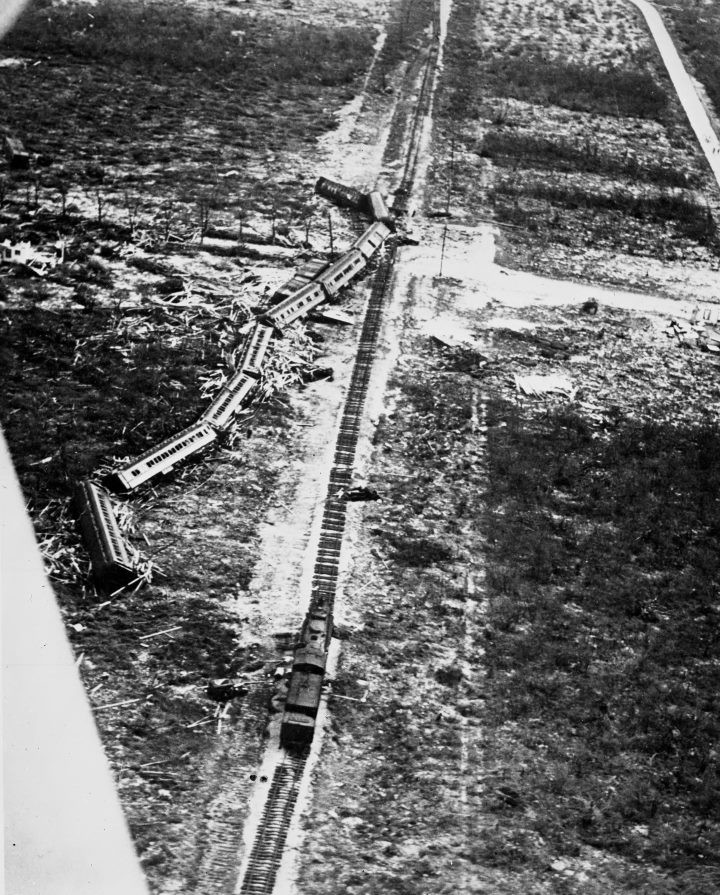 Rescue Train Swept off the Tracks by the 1935 Category 5 Labor Day Hurricane in Florida
Rescue Train Swept off the Tracks by the 1935 Category 5 Labor Day Hurricane in Florida
The devastating aftermath of the 1935 Labor Day Hurricane in the Florida Keys, showing a rescue train tragically swept off the tracks. Source: Library of Congress
The Labor Day Hurricane of 1935 is the first recorded Category 5 hurricane to strike the US. Making landfall on September 2, 1935, this storm achieved estimated wind speeds of 185 mph and an astonishingly low central pressure of 892 millibars – the lowest ever recorded for a US landfall. It was also historically significant as the first documented instance of an aircraft being used to locate a hurricane, with a flight on September 2 providing the storm’s location just hours before landfall.
The Labor Day Hurricane caused catastrophic damage in the Florida Keys, particularly in the Upper Keys.
While precise damage figures are difficult to calculate for this era, estimates suggest damages likely exceeded $6 million, a substantial sum during the Great Depression. The Labor Day Hurricane’s profound impact, marked by widespread destruction and significant loss of life, remains a benchmark for extreme hurricane intensity and a critical historical case study.
Preparing for a Future with Category 5 Hurricanes
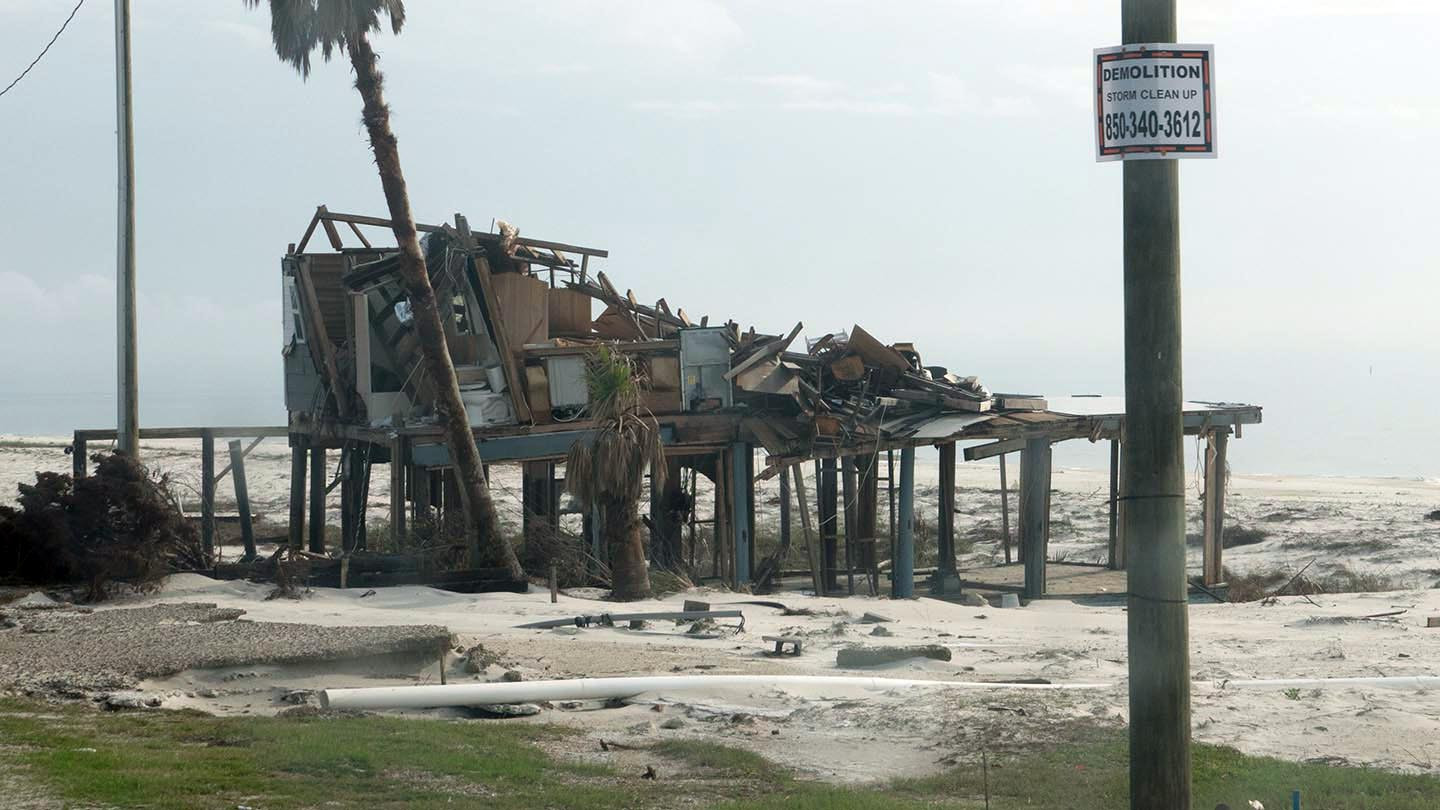 Beach house destroyed on Gulf Coast after Category 5 Hurricane Michael.
Beach house destroyed on Gulf Coast after Category 5 Hurricane Michael.
Coastal homes reduced to ruins along the Gulf Coast, highlighting the destructive power of Category 5 Hurricane Michael.
Category 5 hurricanes represent the most extreme storms on Earth, bringing unparalleled levels of destruction and posing immense threats to human life. The history of Category 5 hurricanes in the US underscores the critical need for robust preparedness measures, advanced early warning systems, and resilient infrastructure in coastal regions.
Specialized teams assist governments and organizations in developing comprehensive disaster preparedness strategies, helping communities become more resilient in the face of these inevitable natural disasters. By focusing on preparedness, we can work towards building safer and more resilient communities for the future.

